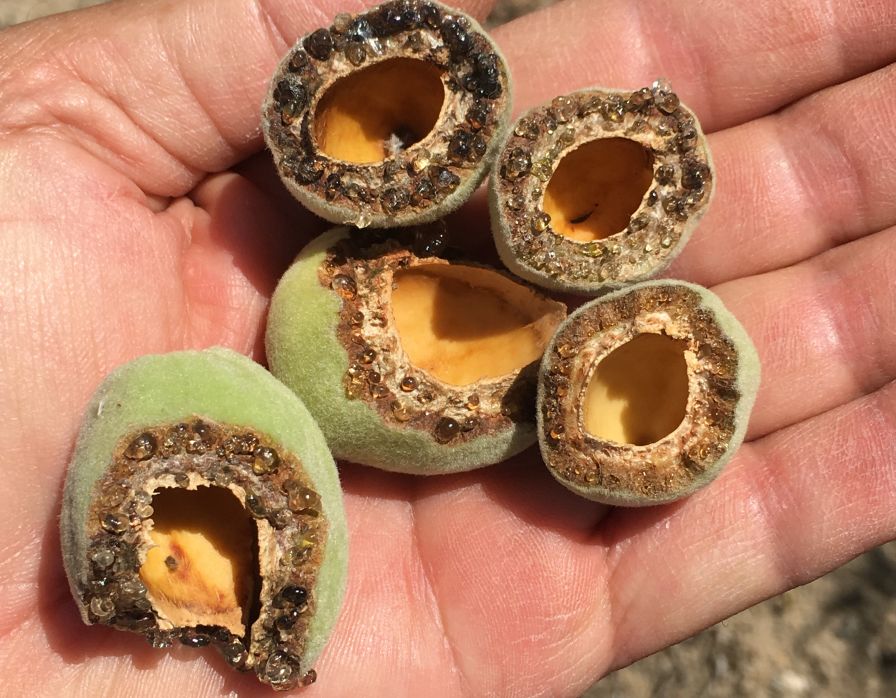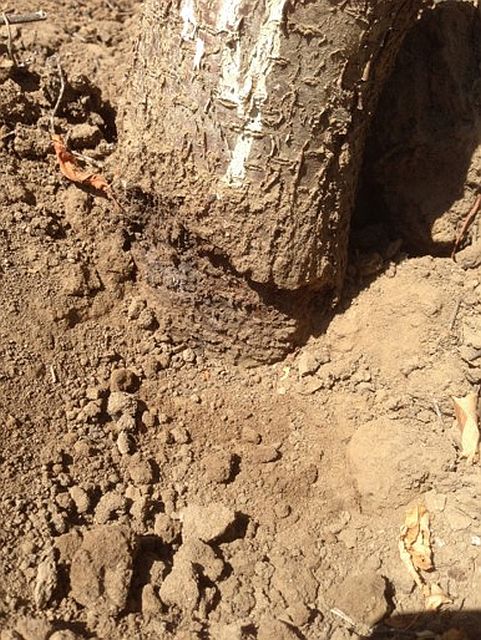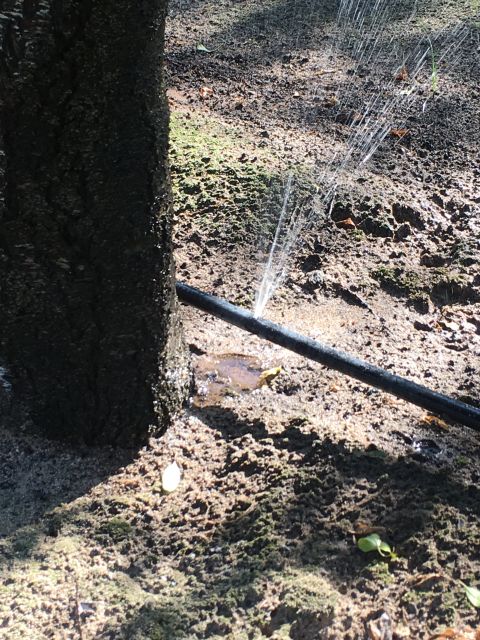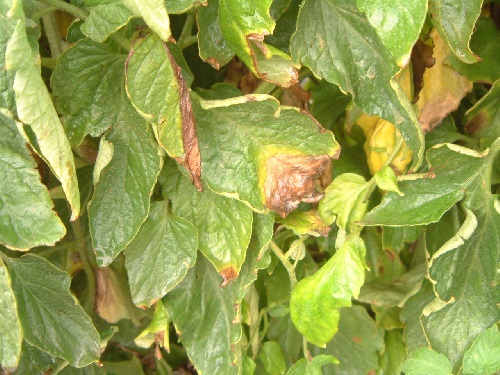Vole Presence High in Nut Orchards Thanks to Wet Winter

Eaten nuts are a sign of voles in your orchard. (Photo: Wes Asai)
The wet start to 2017 ensured that much vegetation would grow in and around almond, walnut, and pistachio orchards, resulting in elevated vole – commonly known as meadow mice – activity. Girdled trees, eaten nuts, and chewed irrigation tubing reports were at all-time highs. Individually, each of these disorders may cause a nuisance, but collectively their impacts can result in economic tree losses, reduced production, and increased labor costs.

A young tree shown here is girdled by voles. (Photo: Wes Asai)
Girdling of young tree trunks is the most dramatic form of damage, since trees will rapidly yellow, become stunted, or collapse and die, depending upon the degree of damage. If the damage starts early and continues around the entire circumference of the trunk, the tree will quickly die. This usually is accompanied by dense weed growth surrounding the young trees, since this provides the shelter needed to complete the extensive damage.
Voles do not like exposure and seek densely weeded areas where their feeding and breeding can be concealed. In many cases, simply keeping a clean, weed-free strip down the tree rows will prevent damage. But if populations are high enough, even clean strips will not prevent economic consequences. Even if the base of the trunk area is clean and little girdling is present, crop damage from nut feeding can be significant, or the repair of chewed irrigation hoses will intensify irrigation management.
Quiet Invaders
Vole populations can be very high with little physical evidence of their presence. They do not leave large mounds, trails, or exit holes. Often, the first evidence of their presence is the repeated need to repair drip or micro-sprinkler hoses where their gnawing causes miniature leaks. Voles tend to stick to very limited and specific travel routes. This is why hose damage almost always occurs directly adjacent to the trunk of the tree, where these rodents burrow and live.
The logistics of using traps, repellents, or exclusionary fences is only practical for small yards or gardens. The use of owl houses will contribute to the control of vole populations, but as with gophers, is usually not by itself a satisfactory method of control.
Control by baiting is the most effective method of vole control, but this has its limitations. Whether using acute toxicants or anticoagulants, care is needed to avoid affecting non-target species, pets, or children.
Anticoagulants require multiple feedings over several days to achieve a lethal dose, thus the bait must be constantly supplied to the burrows or used in feeding stations, which is not always practical for large orchard blocks.
Broadcasting the bait is not always allowed by the label, but
this can depend on whether the restriction is based on avoiding non-target species or use in bearing orchards. The same considerations apply to the toxicant baits, such as strychnine or zinc phosphide. Their biggest restrictions usually center on if they can be broadcast, if they are labeled for the pest and crop, or if they can be used in bearing orchards. Always read and follow the specific product label before using.










